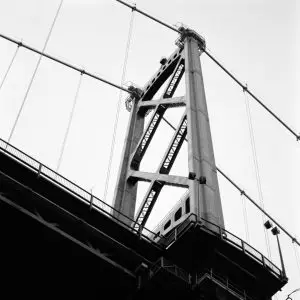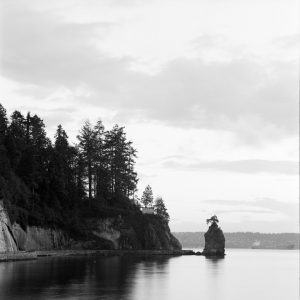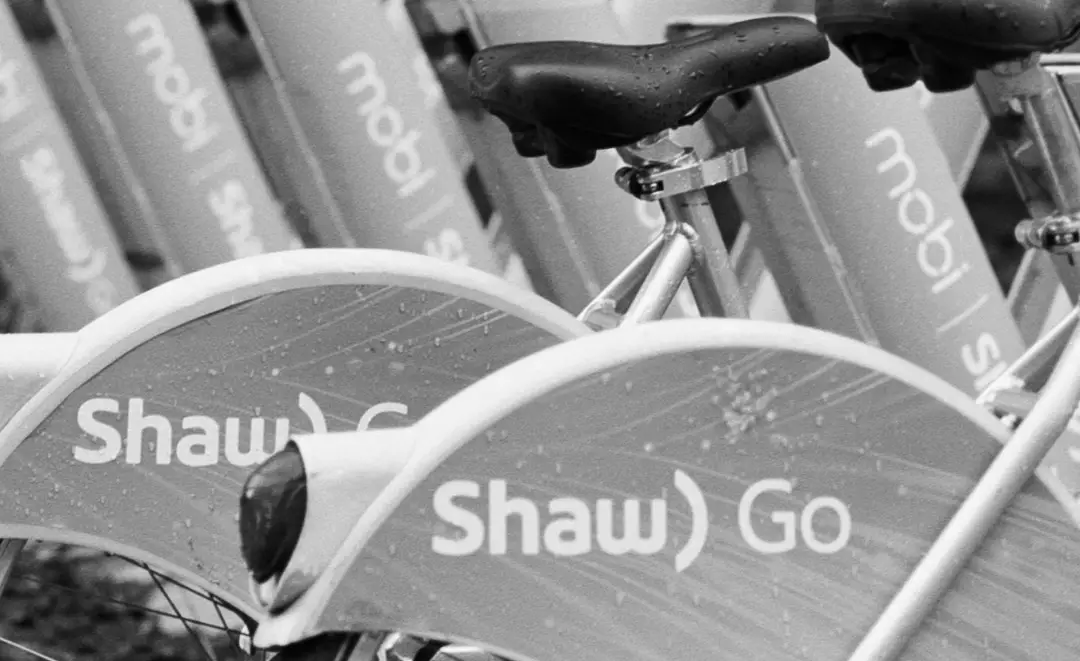One of the best purchases I’ve made most recently was a Hasselblad 500C. Not because it takes great pictures, but because it has multiple backs so I can take okay pictures with different film stocks and compare them face to face.
So, naturally, the first test I wanted to make was to see the difference between Ilford FP4+ and Delta 100. Because I’ve shot both of these film stocks in the past with great results. But you can only truly see the difference between them when taking the same image side by side with the same settings. So what is the difference between Delta 100 and FP4+?
Ilford Delta 100 is a t-grain film that produces images with slightly less grain, but more contrast than FP4+. Both films perform roughly the same in terms of sharpness, while Delta 100 captures slightly more shadow detail than FP4, despite having a lower ISO.
Both films capture a remarkable amount of detail and have such fine grain that it’s hard to pick out without zooming in to 200% in Lightroom. Both of these films are top performers in their field, and are prized by portrait, wedding, and landscape photographers who want to get the cleanest, sharpest images with a little more contrast.
The Delta line is Ilford’s top the line, modern film emulsion aimed at professionals who need the highest quality films for art and publishing, while FP4+ is aimed at everyday consumers looking for a fine-grain film. But while the Delta 100 does create slightly brighter images than the FP4, I don’t know of any practical reasons to spend the extra $3 on a 35mm roll (according to B&H’s prices).

T-grain versus standard grains
The biggest difference between these two films is the type of grain that the emulsion is made from.
Delta 100 is a t-grain (or tabular grain) film, which is a modern, flat grain structure that captures more light while using less silver than traditional grains. FP4 is a film stock made with a traditional film emulsion, which is grainier, but produces images with a rich tonality.
In real-world terms, t-grains are sharper, faster, and cleaner, but suffer from a lack of tonality which makes them appear more contrasty than traditional films. They are also more sensitive to changes in developer temperature and time. As little as a 10% increase in development can make a vastly more contrasty image than it would with a traditional grain film.
Both film types have their benefits and drawbacks. But traditional-grain films are usually intended for newer film photographers because they are easier to shoot and develop. T-grains, on the other hand, are intended for professionals who, with methodical metering and developing, will be able to extract the most of these technical films.
The Learn Film Photography testing method
As much as possible, we prefer to put film head to head. All of these images were shot using the Hasselblad 500C with A12 film backs using the same settings and focus shot for shot. Most of the photos were composed on a tripod, but where there was enough light for a 1/250th of a second shutter speed, I shot the images handheld.
The films were both developed for their standard dev times in Ilfotec DD-X, and scanned using a Sony A7III DSLR with a Sigma 70mm f2.8 Art Macro lens using the same settings. The files were then converted individually in Lightroom using Negative Lab Pro, and no changes were made to the resulting images. Everything (except for the first image above) is as straight out of the camera as possible with my setup.
Click on the images below to see them full screen.






Ilford Delta 100 vs. FP4+ sharpness
The downside of testing with medium format film is that the differences will not be as apparent as they will on 35mm film. Shooting both of these films on 120, I had a hard time really finding which film was sharper.
In fact, in my comparison, I actually found that the FP4+ was a hair sharper than the Delta 100 overall. This result is confusing, and shows to be true both when the film is shot handheld, as well as when the camera was on a tripod.
My best guess for the reduction could be because I was using DD-X. DD-X does contain a solvent that slightly reduce the size of film grain, which can lead to a reduction in overall sharpness. But there may be other factors at play here.
If sharpness is the final result you’re looking for, I’d suggest trying Delta 100 and FP4+ in a developer like Rodinal, which produces extremely sharp images compared to most other developers on the market.


Which film is grainier?
Film grain is a big reason why many photographers will choose to use slow speed film emulsions. The sharpness and clean aesthetic of these emulsions simply cannot be matched by faster films, which have lower resolution due to the larger grains.
As expected, the Ilford Delta 100 produces an almost grain-free image, while FP4+ does show moderate grain in the brighter sections of the image. If you look in the brighter, out of focus areas of the image with the bikes, you will see significantly more grain with FP4+.
Overall, the images appear grain-free until you zoom in 200, or even 300% in Lightroom Classic. These are both outstanding films. But if you need the least grain possible for your photoshoot, then certainly the Delta 100 will produce better results.


Tonality comparison
Tonality is how much gradation there is between the highlights and shadows of an image. A film with good tonality will be able to capture more of a range between the highlights and shadows of an image, and will likely be a good candidate for pushing and pulling.
Once again, the bicycle image is the best one to compare the tonality between these two film stocks. Because this image contains some rich transitions from highlights to darks, it will show which film has the most range.
One interesting note is how much brighter the Delta 100 is in the shadows compared to the FP4 photo.
The Hasselblad cameras only work in half stops instead of 1/3rd stops, so I was unable to adjust the exposure between the two films. Yet, the Delta 100 is brighter, even though it has a lower box ISO speed.
I found that the Delta 100 was slightly brighter in many of the images, while the FP4 tended to have lower contrast overall. The FP4 was able to capture more of the highlights and shadows in a single image, which was apparent in the histogram of the image output.
The difference between the two in this regard, however, is also very minimal, and can be easily corrected with a good scan in Lightroom.


Final thoughts
I spent a long time looking through these scans to come up with as accurate of differences as possible. In the end, it was hard to find any major differences that would make me lean on one emulsion over the other.
The biggest difference that I found was in the grain, where the Delta 100 appeared almost completely grain-free in comparison to the FP4.
But if I had to guess which film stock made which image, I doubt that I’d be able to do it with any real accuracy. The Delta 100 is slightly more contrasty, and did appear less sharp than the FP4, despite both of them being developed in DD-X. But I don’t believe the differences are enough to really see without a magnifying glass.
That said, I believe that the differences will be magnified on 35mm film, where grain and tonality make a much bigger difference.
Overall, I loved the tonality and richness that was present in the FP4+, and will likely continue shooting that film for portraits and even landscape images. I’ve never minded a bit of grain — that’s part of the reason that I shoot film in the first place.
Have you had other experiences with this film? Let me know your thoughts in the comments down below! I’d love to hear your thoughts on these two incredible film stocks!


Hi there,
Thank you very much for your great word and detailed information between these both films. Very interesting.
In the meantime I tried the ADOX CHS 100.. so far I liked the results as well – I think it will be in the middle and leans more to the FP 4.
Best wishes to you